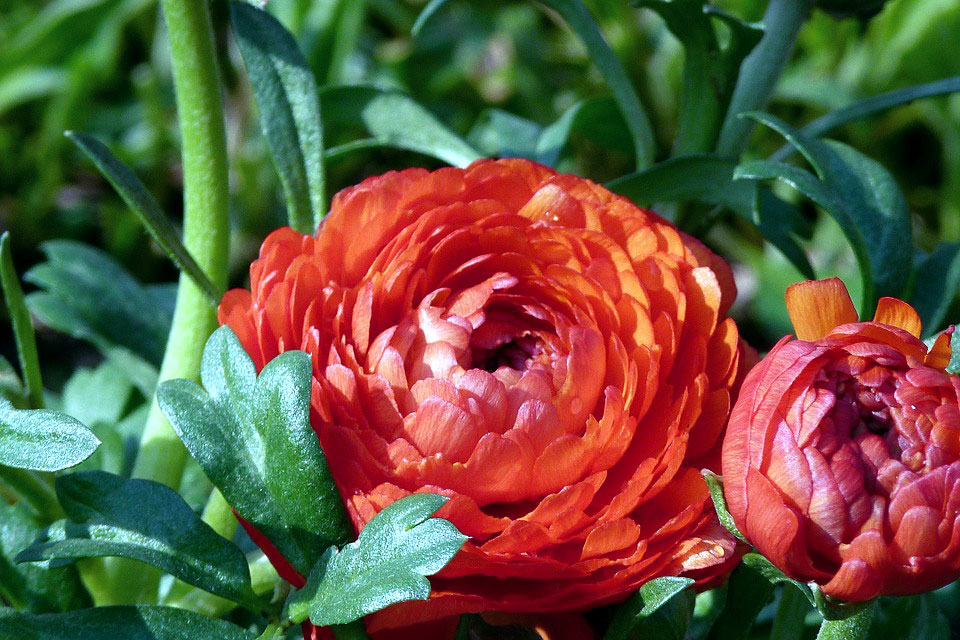Ranunculus (Buttercup)
Learn how to grow and care Ranunculus flower, Growing Buttercup plants, the flowers of Ranunculus are mysterious, most people in the spring are familiar with rose flowers. Ranunculus is also a popular cut flower, these tender bloomers require extra care of the cold. If you are fond of placing a bouquet in your drawing room, then this is a good choice, because of its unreliable color and direct floral tendency, it is an excellent cut flower because they are affordable, beautiful, and long-lasting.
Buttercup plants require sunlight and less water. The best use of the Ranunculus plant is mostly used in the form of borders and bed. Tissue-paper-thin petals increase its beauty. How to grow these Mediterranean natives in your containers, Nature Bring gives you its information.

Classification
Scientific name Ranunculus
Common name Buttercup
Plant type Flowering
Sun required Full Sun
Soil Well-drained
Soil PH 6.0-7.0
Flower color Yellow, orange, red, purple and pink
Blooming Time March – late summer
Zone 8-11

How to grow Ranunculus flowers
Location and soil
- Ranunculus prefers the presence of the full sun and well-drained soil so keep in mind while choosing a place. These are Hardiness at USDA Zone 8-11. It does not tolerate warm and wet environments.
- Buttercup is the flower of cold weather, which is very good in spring temperature. For this, the ideal temperature is 55 degrees Fahrenheit. Cool climate 4-6 areas, where they are not hardy in winter, these plants are planted in containers instead of outside and perform best. To get flowers in late summer, corms are planted in the spring.
Planting tips Buttercup plants
- Fall, late winter or early spring, you can plant the ranunculus, depending on the area and the environment of your living. Planting corms in spring seasons are more prolific than the fall.
- When you open packaging of ranunculus corms, brown octopuses look similar. But you do not panic, these are not what you are thinking. These strange looking creatures will actually fill your garden with beautiful flowers.
- For Planting, select the tubers called Jumbo, which is about 8 centimeters in the perimeter and one of the tubers produces lots of flowers.
- Soak these tubers before planting, then keep it at room temperature for 3 to 4 hours, which helps in providing extra oxygen. You can apply the soaked tubers directly on the ground or be pre-sprouted. With pre-sprouting, the plant goes starts with a jump and producing flowers in a few weeks.
- To pre-sprout, fill the tray with half of the potting mix, keep the soaked corms in it and cover the top with the potting soil. Place the tray in the cool place (40-50 ° F). Keep checking in between – and maintain soil moisture, do not soggy. Remove immediately if appearing rote or mold sign.
- You will see that the tuber will double its shape and the small white roots will develop, it is like the hair in appearance. Once the roots get a little longer, So by removing it, you make 2-3 “deep in the ground and planting.
- The bouquet made of Ranunculus lasts for more than 10 days, so its flower is considered better for cut flowers. Read more.
Sow with seeds
If you want to plant Ranunculus from seed, then it will be beneficial to sow in the seed start mix in late winter. During this time keep the soil temperature at 50 ° F, it takes 20 to 30 days to germination. After germination, keep the indoor temperature at 55 ° F until you are planting it outside. By June, Buttercup will start producing flowers.
Blooming time
Ranunculus usually starts flowering after about 90 days after planting. A fall-planted corms start flowering in the spring, while the corms planted in the late winter continue to blossom in 4 to 6 weeks from the middle spring.
Ranunculus Care
- Ranunculus requires consistent sunlight for at least 6 hours, so choose a place where there is enough sunlight. Keep the raised bed to protect the tubers from rotting, which can provide good drainage.
- Examine the pH before planting. Adjust it between 6 and 7 pH by testing the soil.
- Use Bone Meal over the Planting Area, read the instructions written in the packet carefully, before use.
- Place the layer of 1- to the 2-inch deep organic matter in the planting bed.
- Planting of tubers set to 2 inches deep and 6-8 inches apart.
- Spread 2 to 3-inch mulch near ranunculus bed. Read more.
Fertilizer
Use granular flower fertilizer six to eight weeks after planting, use it according to the instructions in the packet. Use liquid fertilizer approximately 1 month later. Buttercup will encourage lush and thick growth.
Read also: 11 best winter flowers for your garden. Bleeding Hearts growing and caring tips. Anthurium growing and caring guide. How to grow Crossandra flowers. Geranium Houseplant in containers. 10 splendid plants for Flower bed gardening. Growing Passion Flowers in containers. Vegetables you can plant in October. Growing Coriander and caring guide. Plumeria growing in containers. Hollyhock growing guide.
For Pin:





